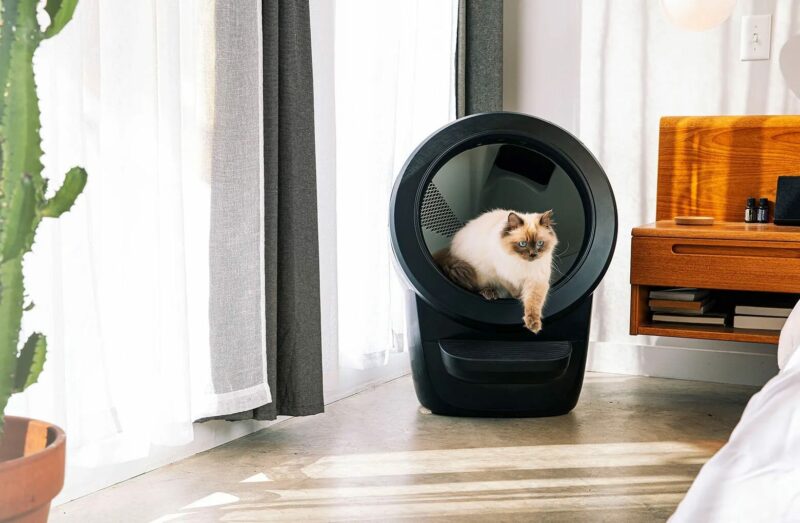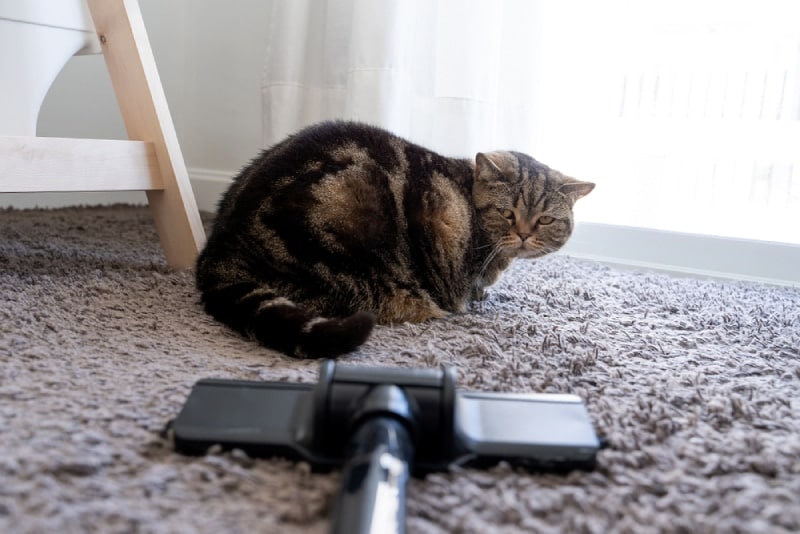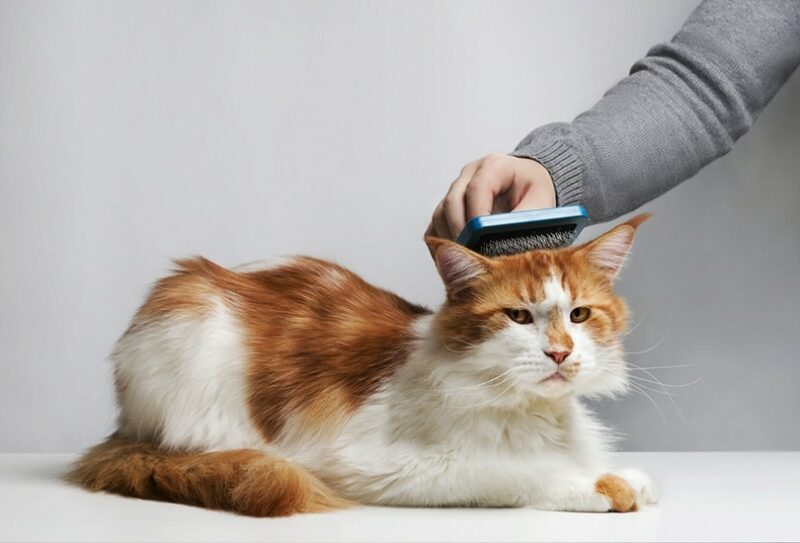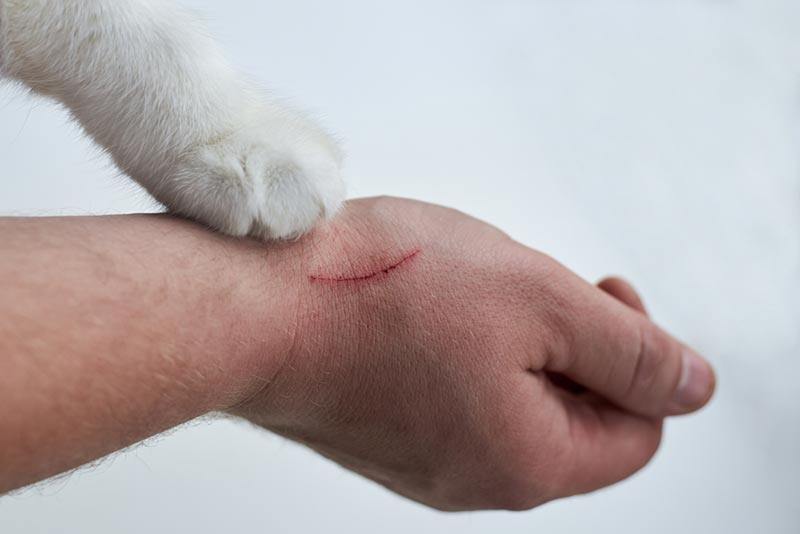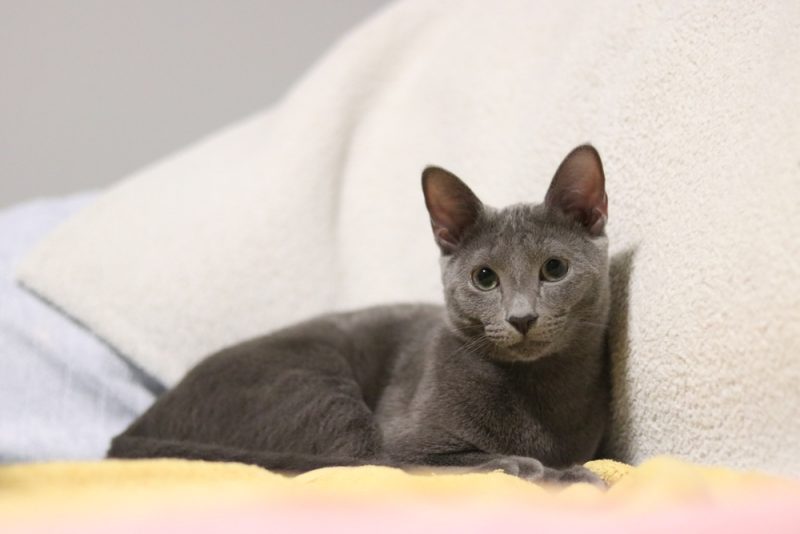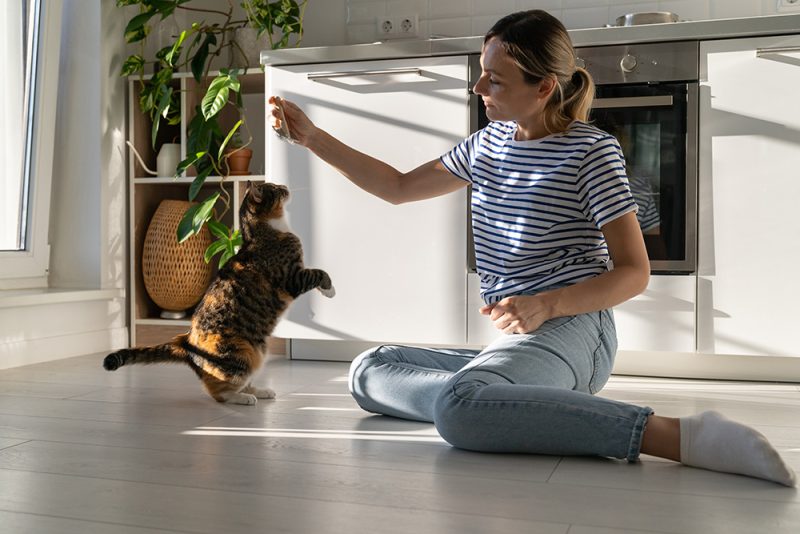In this article
Litter-Robots are a big deal for cat owners since they clean the cat’s litter, and the odor trap system keeps odors at bay! So, you’ve spent top dollar on this massive litter box and brought it home. But what if your feline buddy refuses to use it?
Transitioning from the open plastic box underneath your bathroom sink to a Litter-Robot can be challenging for your cat, and understandably so. Here are some tips and tricks to help your cat get accustomed to the mechanical litter box.

The 7 Tips & Tricks to Get Your Cat to Use a Litter Robot
1. Don’t Assemble the Litter-Robot Immediately
Does your feline friend freak out when they find a new object in the house? If you have seen them avoiding a room after buying a new appliance, wait for a few days before assembling your Litter-Robot.
Unwrap the package and leave the parts on the ground for your cat to investigate. Also, place the box around and let them play with it. The idea is to let them get familiar with the machine’s scent before you assemble it.
2. Location Is Key!
The best strategy to entice your cat to use a Litter-Robot is to place it in an ideal location. Cats like to do their business in a private spot away from traffic. Once it’s time to assemble the new machine, it’s better to place it in the same spot as the old litter box.
Also, ensure it faces the same direction to avoid disrupting your cat’s usual bathroom routines. Another crucial tip is to remove the cover during the transition period. If your cat feels trapped inside, they will likely never enter the machine again.
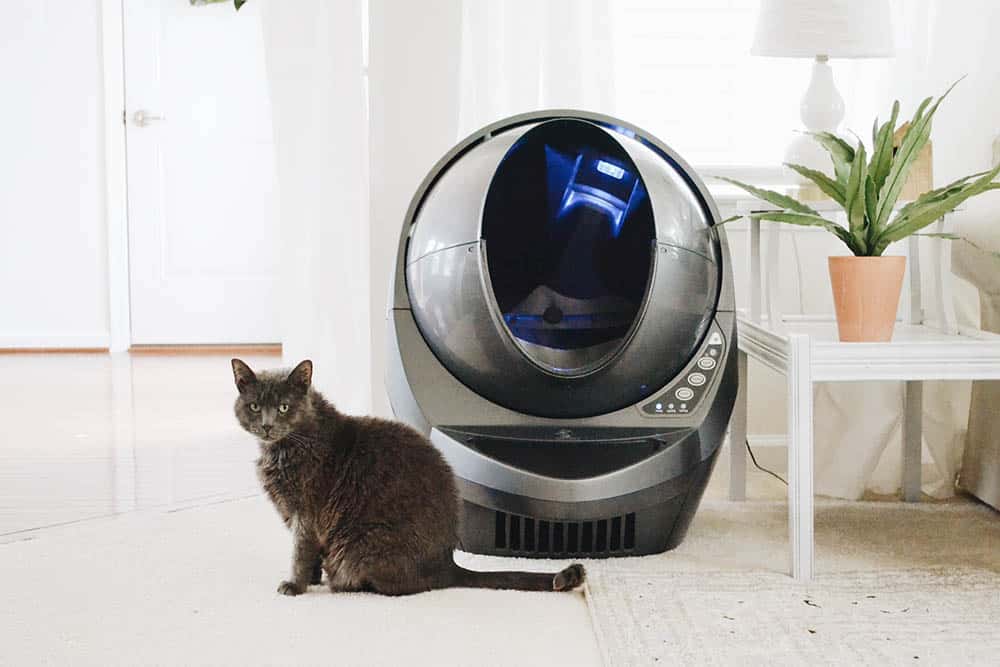
3. Don’t Turn on the Litter-Robot Just Yet
Automatic cat litter boxes can be loud. Some make loud bangs or flushing sounds when the scoop is in action. While some models are quieter, they all produce a noise unfamiliar to your cat.
Generally, Litter-Robots produce a noise level between 25 and 40 decibels while self-cleaning. The shifting mechanism makes a noise as the globe rotates to separate the clean litter from the soiled. Most cats get startled and may avoid using the machine if you turn it on too soon.
It would help if you played safe by keeping the Litter-Robot turned off during the first week of your cat using it. Only turn it on for a clean cycle once your cat leaves the bathroom. After the transition period, turn on the Litter-Robot when your cat is present.
It’s crucial to let your cat get familiar with the motions and sounds made by the facility. Comfort them when the machine is on. Do this together multiple times until you are sure that the noise or motion does not leave your kitty freaked out.
4. Don’t Toss Out the Old Litter Box
If you throw out the old litter box too soon, your cat may show disapproval of the new Litter-Robot by peeing on the floor or your rugs. It’s best to let your pet stay in control and choose to use the mechanical litter box on its own accord. Place the old litter box next to the new one.
Also, scoop litter from the automated box and sprinkle it on the old litter tray. This allows your cat to start getting accustomed to the sight of the “space pod” and the smell of the new litter. It will also encourage your pet to explore the Litter-Robot on their terms.
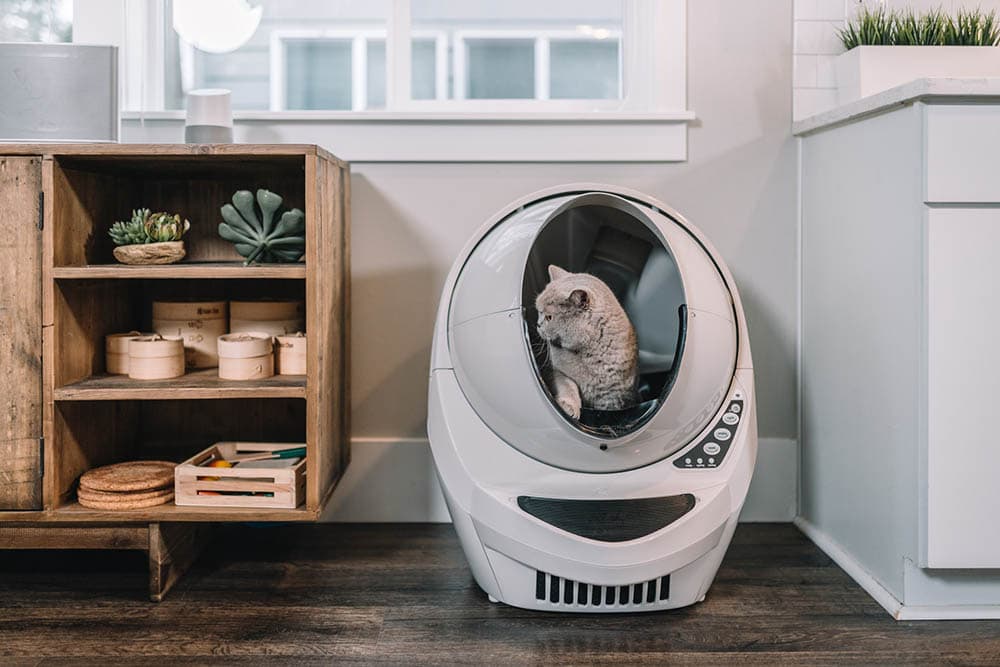
5. Use Familiar Scents
If your cat investigates the Litter-Robot and finds it safe but won’t use it, you can try a different trick. Take a scoop of the old litter and use it in the Litter-Robot. Your feline friend will likely pick up the familiar scent and understand the use of the new machine!
Litter-Robots don’t use the usual type of litter. They use a unique substrate like washable crystals, clay, or granules. If your feline still does not warm up to using the machine, sprinkle more of the new litter into the old litter box. Keep adding the amount over a couple of days until the old litter box uses only the same litter used in the machine.
As you do this, monitor your cat’s bathroom behaviors closely. If they do not disapprove of the substrate litter, it won’t be long before they start using the self-cleaning machine.
6. Slowly Make the Old Litter Box Less Attractive
At this point, most cats will have warmed up to using the Litter-Robot. If yours is still resisting change, don’t despair. There is still one more trick you can try. Stop cleaning the old litter box!
Cats love to keep things clean and prefer a clean litter box to a dirty one. You can encourage your pet to use the self-cleaning Litter-Robot by failing to clean waste from the old litter box.
Add the scent of the old type of litter into the machine to further motivate your feline to switch to it. You can also take things a notch higher by shifting the old litter box to a less ideal location.
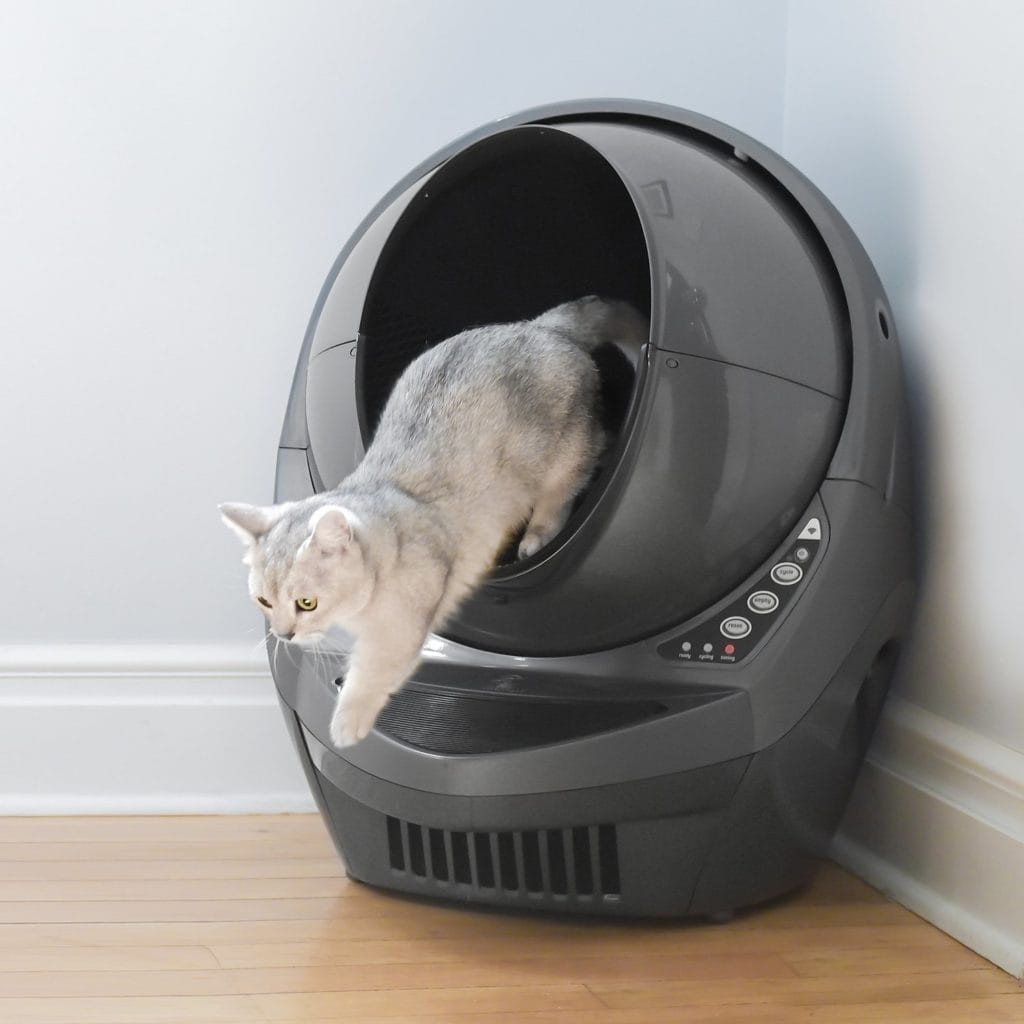
7. Use Positive Reinforcement
Forcing a sassy cat to use a new Litter-Robot will only trigger retaliation. It is always best to take things slow, even when implementing tricks to make the Litter-Robot more attractive. Consider your pet’s personality and do what you think will work to encourage them to use the new facility.
For instance, if your cat is a sucker for catnip, place a catnip stick on the steps of the Litter-Robot. You can do the same with their favorite treat. Also, reward your cat once they use the bathroom in the desired location. Anything works, including a play or cuddle session.

FAQ
What Is the Estimated Duration for a Cat to Get Accustomed to Using a Litter-Robot?
The duration it will take for your cat to get used to a Litter-Robot depends on their personality. While some cats will use the Litter-Robot straight out of the box, most take several days to give the self-cleaning cat bathroom a shot. If your cat is picky, you’ll need to be patient and consistently implement the previous tips for several weeks.
What if My Cat Never Warms up to Using the Litter-Robot?
Most cats, even those that show stern disapproval of the Litter-Robot, eventually use it. However, about 4% of felines would rather pee on the floor than use the self-cleaning Litter-Robot. If all your attempts to entice your cat to use the machine fail, you can always refer to the return policy. Most models allow you to return a clean Litter-Robot within 90 days and enjoy a full refund minus the return shipping fees.
When Do I Toss Out the Old Litter Box?
Once your kitty starts using the Litter-Robot, it should not be long before you can do away with the old litter box. Keep it around for a few days and ensure it remains unattractive. You still want your feline friend to feel in control by providing options. Once they use the Litter-Robot for at least 2 consecutive days, you can toss out that old litter box.
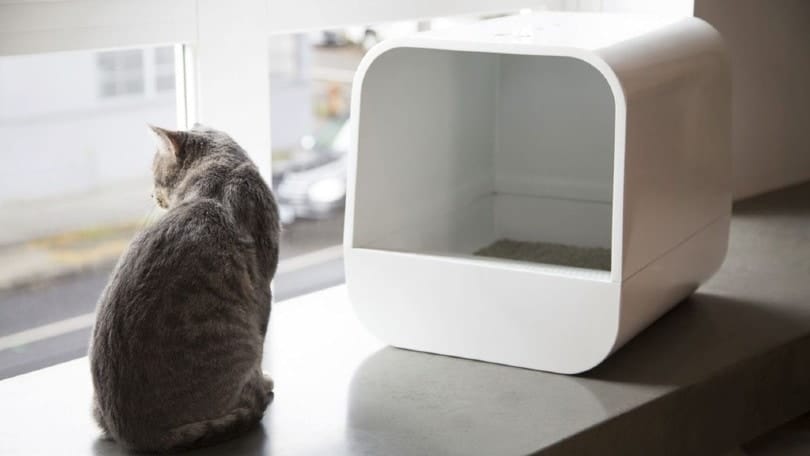

Final Thoughts
Litter-Robots are designed to simplify cleaning your cat’s litter. While you still have to remove the waste once weekly when cleaning out the litter tray, they make cat ownership much more manageable. Litter-Robots can also improve your home’s air quality by locking out foul smells.
Cats are creatures of habit. They love their routines and will not enjoy seeing a new appliance in place of their litter box. However, that doesn’t mean your cat won’t change their mind about the new Litter-Robot. If you hate dealing with cat waste and have your fingers crossed that your cat will ultimately use the Litter-Robot, we hope our tips help.
Featured Image Credit: Litter Robot by Whisker
